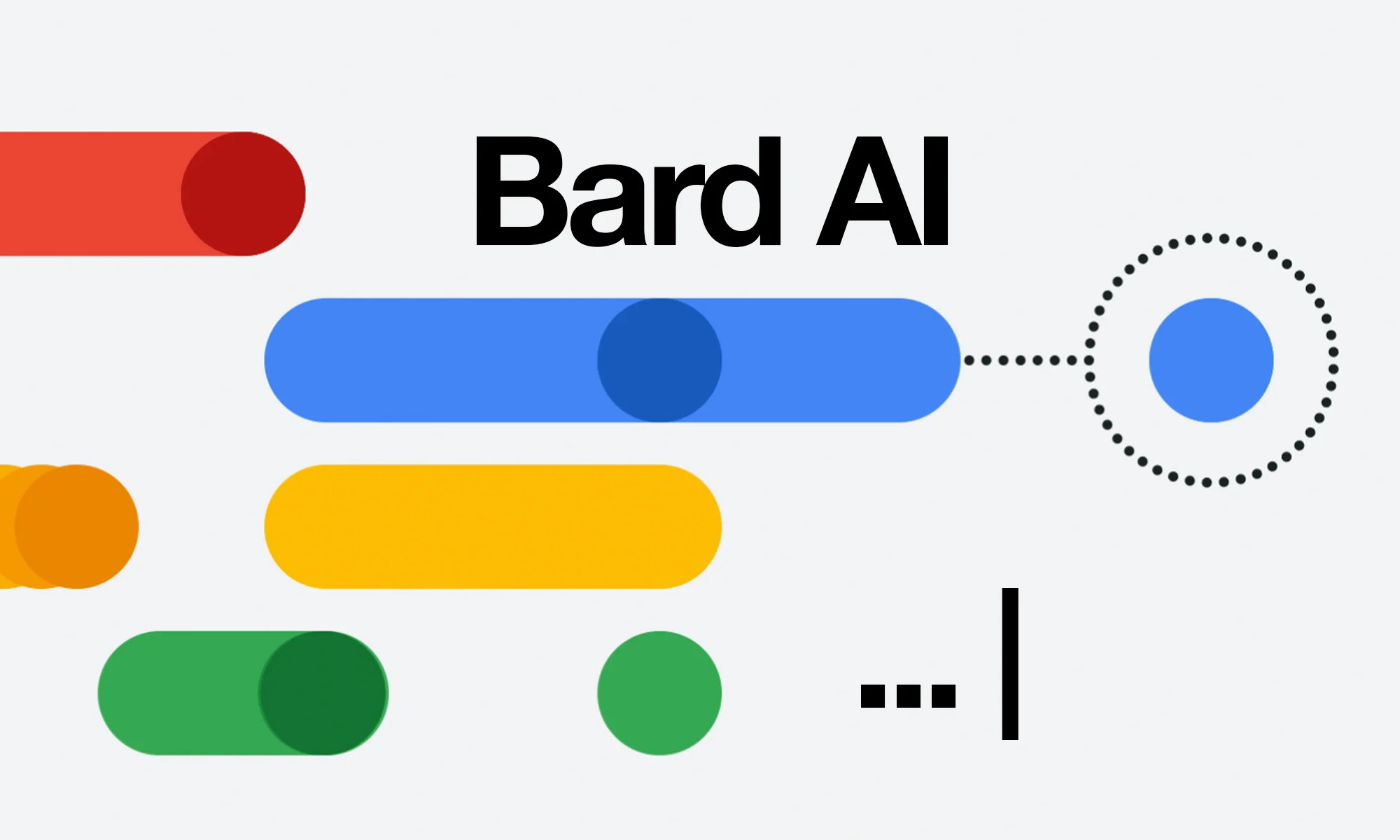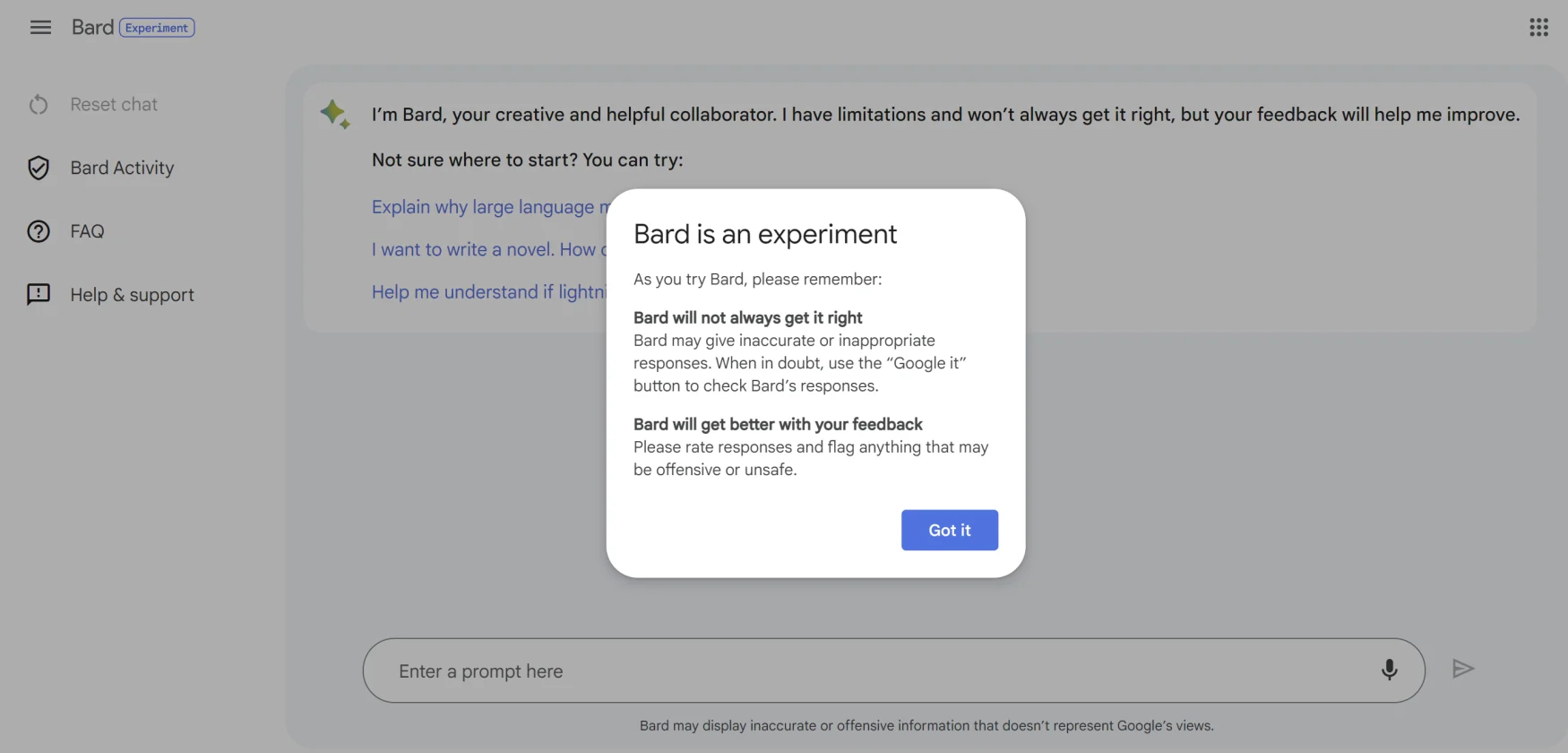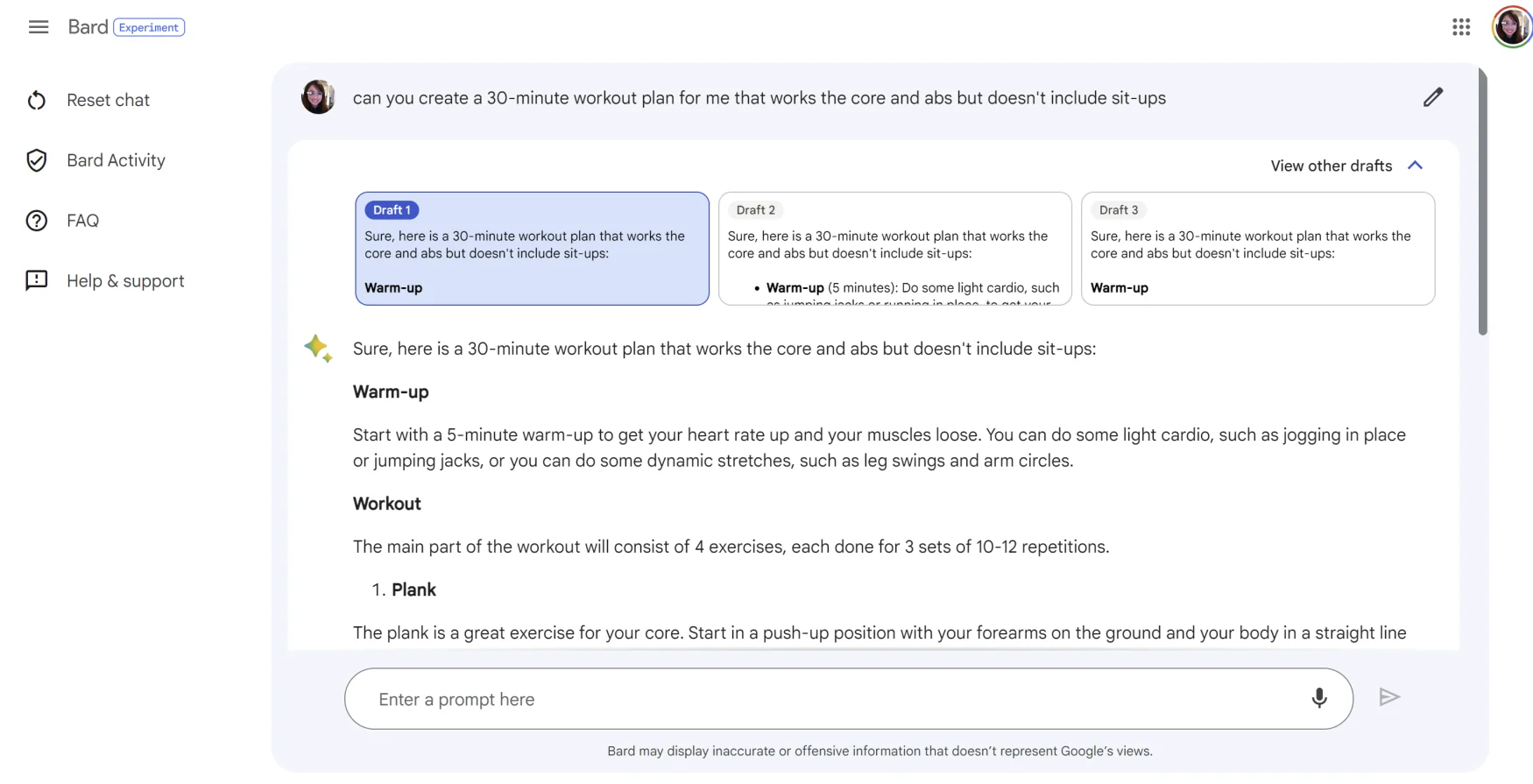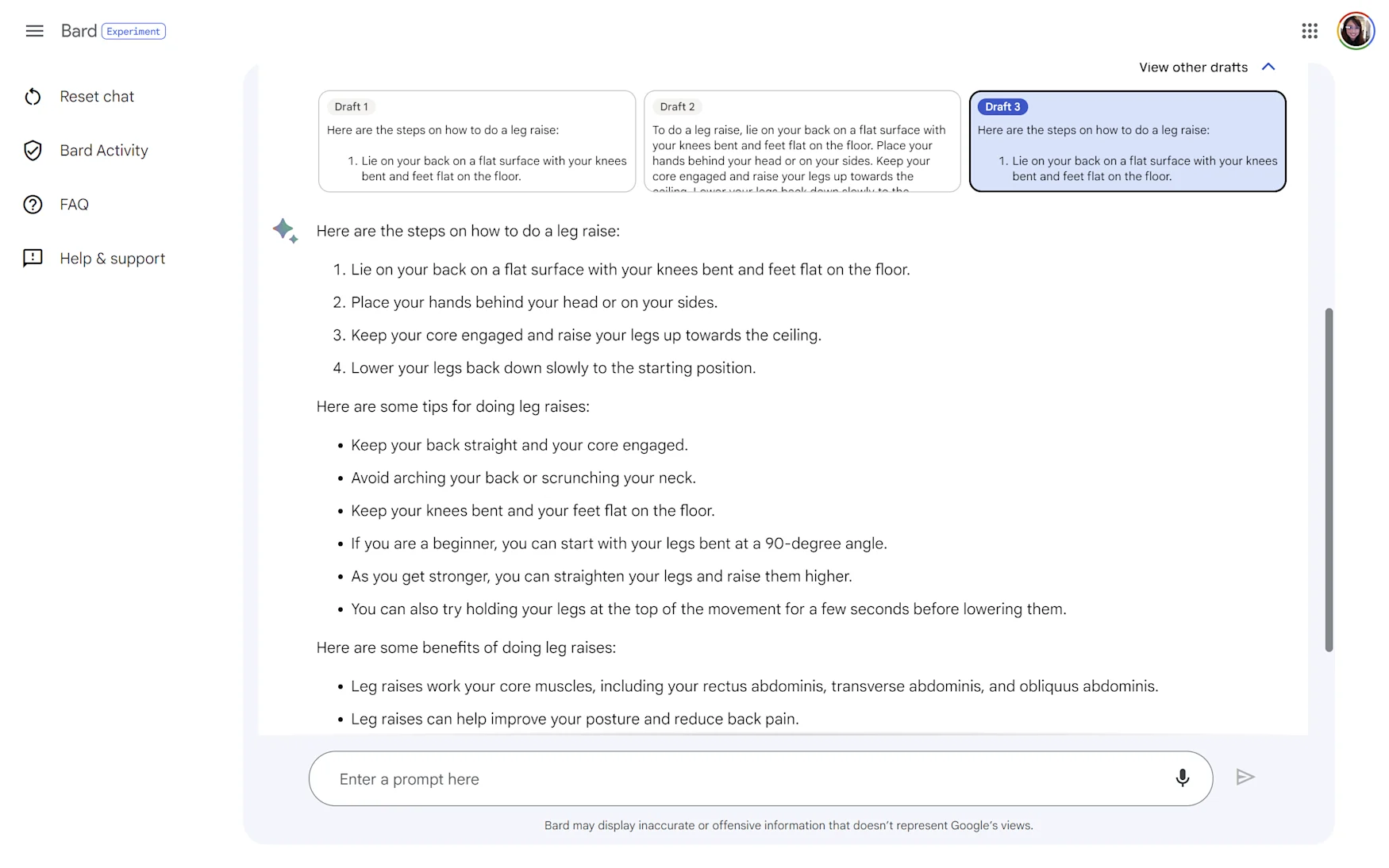Today, Google expanded the use of Bard among users in the US and the UK. I have been interacting with the company's chatbot to examine how Bard's generative AI stacks up against ChatGPT and Bing AI.
The interface here is quite similar to Bing AI in that there is a broad text field at the bottom of the page and a dialogue-based style, as we saw in the pictures Google shared with today's announcement. There are, however, a few significant distinctions between Google's and Microsoft's products.
In contrast to the Bard website, Bing AI requires you to either click Chat or scroll up from the search results in order to reach the chat page. Whereas Google offers a column on the left with choices for "Reset conversation," "Bard Activity," "FAQ," and "Help & Support," Microsoft has a broom symbol to the left of the input bar to clear the slate and start a new subject.
It's also important to note the meticulous phrasing Google employs here. I arrived at the website and was met by a notice that said, "Bard is an experiment." Two things are urged on users to keep in mind: "Bard will not always get it right," and "Bard will improve with your comments."
There remains a line of small print below the input box that reads, "Bard may show false or objectionable content that doesn't represent Google's opinions," even after you click "Got it" and the reminder disappears. When you restart a chat, a notification will appear reading "Bard is still in the testing stage. The experience will be enhanced by chatting with it and assessing its replies." It's natural (and perhaps humorous) to see all these disclaimers given the awful mistakes Bard has previously made.
Yet none of it actually bothers me and has no meaningful impact on how I feel about Bard. Nevertheless, there are a few functional variations between this and Bing AI. One difference is that Bard can tap into your laptop's microphone so you may dictate your questions, but Bing AI on desktop does not (though the app does). I prefer to type because I tend to ramble when I talk, but I have used this technology to read out questions to Bard, and I can attest that it was successful.
The ability of Google to easily view other replies within the discussion is arguably the largest distinction between Bard and Bing AI to yet. The dropdown arrow next to "See other draughts" can be clicked.
I asked Bard to build a 30-minute abs and core training regimen without sit-ups, something I had previously requested of Bing AI at Microsoft's recommendation. Although Bard was able to provide me with a workout that did target those regions while excluding sit-ups, I was more impressed by the other two alternatives I had.
Draft 1 had brief instructions for each exercise and three sets of 10 to 12 reps of plank, side plank, Russian twists, and mountain climbers. Yet the instructions for the planks and side planks were overly straightforward. It provided form advice for both of those, then said, "Hold this posture for as long as you can." This varies greatly from person to person and has a significant impact on how long the purported 30-minute workout lasts. It's not quite obvious whether Bard means to instruct you to hold a plank for as long as you can 10–12 times for three sets.
It was difficult for me to gain further information on these ideas since, unlike Bing, Google's chatbot doesn't always credit its sources. Draft 2, for instance, did cite two sources, but it lacked inline citations for particular passages of the suggested exercise. But, the second choice did come with some more clear instructions. It developed four workouts that would be done in a circuit (i.e. one after another instead of finishing three sets of each exercise before moving on to the next one). Plank, Russian twists, side plank, crunches on a bicycle, and hip lifts were among them.
While the directions for the plank were straightforward, at least for the side plank, Bard instructed you to hold the position for 30 seconds before switching sides. The third draught was finally delivered in a totally different way. This time, Bard included a list of "plank variants," followed by instructions on how to perform "crunches and leg lifts," as well as some cool-down stretches, as opposed to instructing you to perform four or five particular exercises for a few repetitions of a certain number of reps. The chatbot simply stated, "Do 10 minutes of plank variants, 10 minutes of crunches and leg lifts, then 5 minutes of cooldown stretches," at the start of this plan, which was followed by 5 minutes of warming exercises.
A deeper look reveals that some of the given instructions aren't quite clear. For ""Lay on your back with your knees bent and your feet flat on the ground. Do leg lifts," says Bard. Raise your legs up towards the ceiling while holding your hands behind your head." That is at best unclear and at worst incorrect. The first two Google results for "leg raises" include videos and a few diagrams, none of which resemble what Bard described. The New York Times' top text-based article for that query describes the practise considerably more precisely.
I requested Bing to create the same training schedule, and I'm not sure whether it worked out better or not. It provided a more thorough programme with four circuits of four sets of side planks, glute bridges, bird dogs, and dead bugs, but it made no attempt to explain what any of those titles represented.
It appears that follow-up inquiries are required for both chatbots. When I asked Bing and Bard for directions on how to elevate my legs, they both recommended doing it while bending at the knees, contrary to what was stated in the Times, Men's Health, and other articles that appeared in Google's search results. The two bots also provided a set of instructions on where to position your hands and feet, however Bing provided clearer direction with phrases like "so that the thighs are perpendicular to the ground and calves are parallel to the ground."
Avoid arching your back, and as you become stronger, you can straighten your legs and elevate them higher, were two useful additions that Bard made in various iterations (or revisions) of its response. Both Microsoft and Google's offers have their own unique advantages and disadvantages, so it's not yet apparent which will succeed. With Google's extensive experience with voice and AI, it is not surprising that Bard, which is based on the LaMDA language model, sounds roughly as conversational and natural as Bing AI's GPT-4.
Yet Bard is obviously not flawless. It's not yet intelligent enough to take the position of a personal trainer, at least (nor is it meant to). Also, it isn't the quickest or clearest. The lack of animated text detailing what the system is doing and looking for on Bard surprised me because I've gotten accustomed to Bing AI's display of this information. As I waited for a response after inputting my question, all I could see was the Bard icon sort of blinking, giving the impression that Google was taking more time to process my request.
Bard's potential value to me in future searches is still too early to say, but for the time being, Google's strategy is obvious. It has emphasised several safeguards it has put in place to minimise or lessen hallucinations because it is (quite conscious of) the possibility for errors and misuse of Bard. The amount of interactions you may have with Bard before a required subject refresh is yet unknown, and the business has not yet replied to our inquiry.
If you live in the US or the UK, where many people already have access to Bard, you may be able to use it yourself very soon. Remember that this is an experimental chatbot, as Google itself is eager to point out, so you'll need to fact-check its findings and approach the encounter with a fair dose of scepticism. Also, you should avoid giving Bard any private or delicate information because everything it receives will be used to improve its algorithms, meaning whatever you give it may end up someplace else. There is an increased danger of possible biases, prejudice, and faulty reasoning as Bard (and Bing AI) continue to converse with more of us. But maybe it will also






